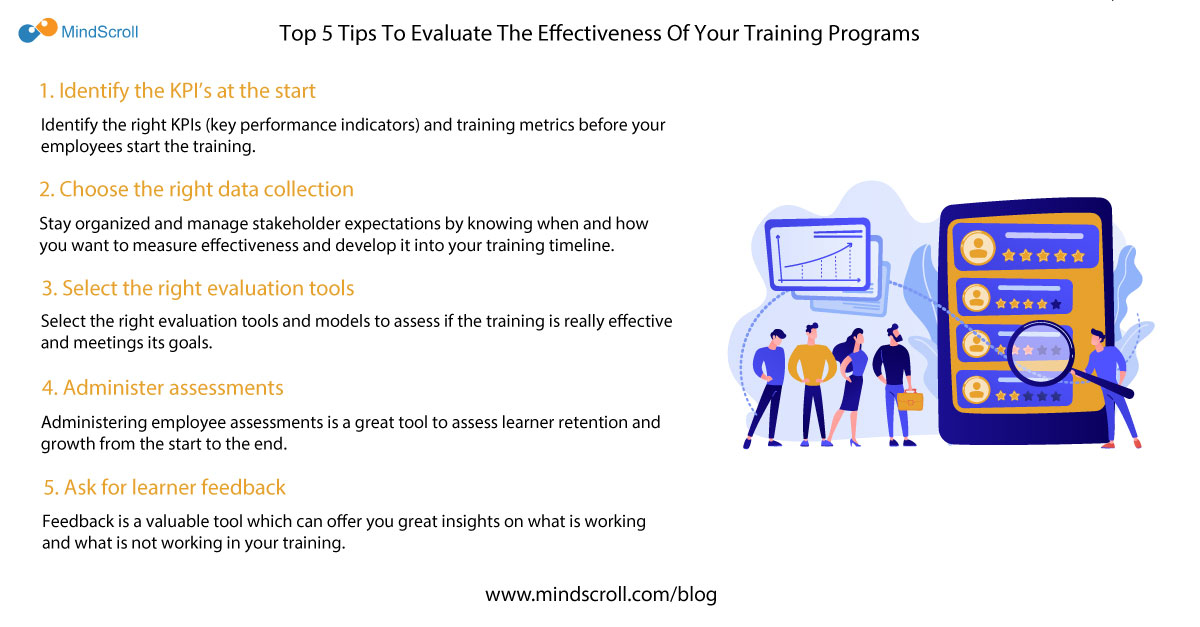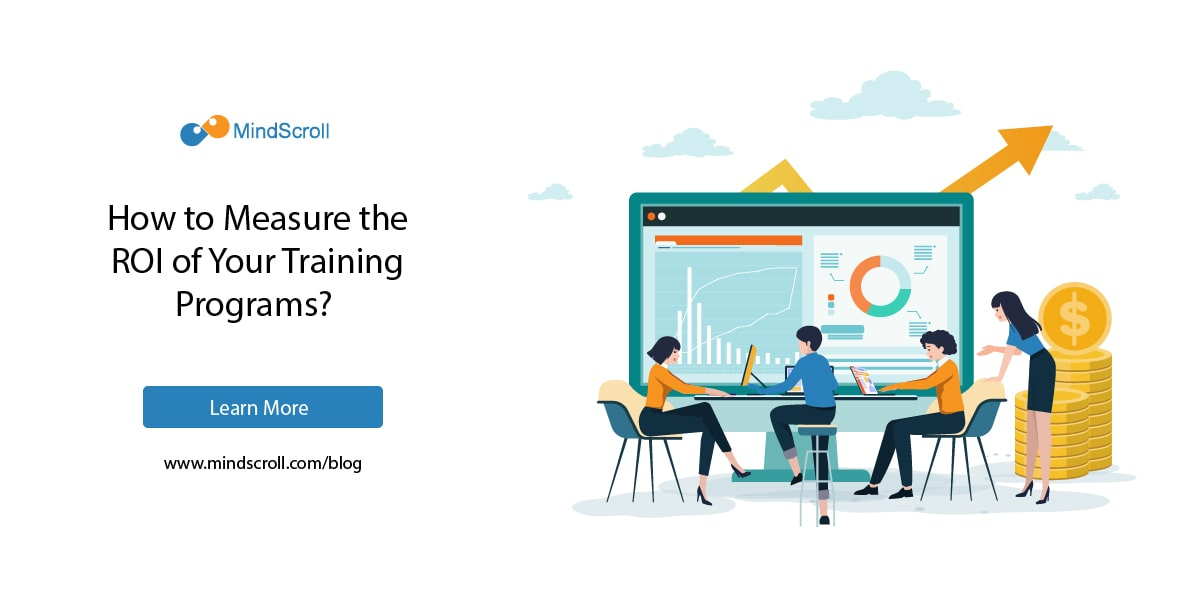Many organizations lack proper metrics to evaluate training and its contribution to positive business outcomes. Without these metrics it is not possible to get any positive results in terms of employee productivity, business success, and more. Thus it becomes important for organizations to regularly evaluate their training effectiveness. This will show you how useful your current training programs are and how you can improve them. Plus, this will also boost team morale, lead to higher employee satisfaction and performance, and increase your return on investment (ROI).
Hence measuring training effectiveness is vital to an organization’s long-term training success. So, are you ready to learn how to assess the training effectiveness in your organization? Keep reading below to know our top 5 tips to evaluate the effectiveness of your training programs.
1. Identify the KPI’s at the start
2. Choose the right data collection
3. Select the right evaluation tools
4. Administer assessments
5. Ask for learner feedback
1. Identify the KPI’s at the start
Identify the right KPIs (key performance indicators) and training metrics before your employees start the training. KPIs help in measuring the progress of employees towards a specific goal. They are a valuable tool to identify knowledge gaps and enhance training procedures.
KPIs should be SMART (Specific, Measurable, Attainable, Relevant, Time-bound). You could have team specific KPIs such as learner feedback, training hours, assessment scores, drop-out rates, and more. You could also use some common KPIs that many companies track like conversion rate, monthly sales growth, customer retention rate, and employee engagement, etc.
Moreover, you should think about which KPIs you want to track based on the metrics which influence business success. This will help you properly evaluate your training effectiveness and support your organization to drive crucial organizational tactics and strategies.
2. Choose the right data collection tools
Stay organized and manage stakeholder expectations by knowing when and how you want to measure effectiveness and develop it into your training timeline. Further, your success in evaluating training effectiveness will mostly depend on collecting and analyzing relevant data - be it quantitative or qualitative.
The use of the right tools like LCMS, LMS, presentation and data analytics tools are also another important factor in the evaluation. Additional tools such as anonymous polls/surveys, training feedback forms, and learner interviews will also help in evaluating training objectively. However, not every L&D team has access to these tools, and even if they do, they are unable to use them effectively. On the other hand, some teams lack an integrated set of tools due to which they use only standalone solutions.
3. Select the right evaluation tools
Select the right evaluation tools and models to assess if the training is really effective and meetings its goals. You should use tools like learner interviews, user satisfaction assessments, focus group feedback, and ongoing surveys to promote active changes in your training programs.
It is also important to use the right evaluation model in your assessment approach. Such as Kirkpatrick’s levels of evaluation, The Phillips ROI model: Context, input, process, and product evaluation model (CIPP), and Anderson’s model of learning evaluation.
However, it may not be essential for you to assess all four Kirkpatrick or any other model levels. Not only can it be costly and a time consuming process as well. Therefore, properly conduct your training needs analysis and then select the training effectiveness evaluation model that best fits your needs.
4. Administer assessments
Administering employee assessments is a great tool to assess learner retention and growth from starting to the end. For example, doing a pre-training assessment gives you a baseline understanding of where your employees stand before getting any training. This helps you in learning how much improvement takes place from start to finish. Similarly, the mid-training can be used in the middle of the training to assess if employees are making improvements and making course corrections if there is any such need. Even though this step is optional, it can be very beneficial.
Lastly, the post-training tests your employees at the end of the training. This can be compared to the pre-training test. This helps you to know if your employees are making any improvements. If there are any improvements then it means that your training is effective. However if there are no improvements or even backsliding, then in that case you have to make some changes to your training.
5. Ask for learner feedback
Lastly, one of the best evaluation metrics is asking for feedback from your learners. Feedback is a valuable tool which can offer you great insights on what is working and what is not working in your training. For instance, you should ask for learner feedback throughout the training course to get an understanding of your employees’ learning experience.
However, know that if feedback is not honest then it is not of any use. So, try to create a space for your staff to openly share their experiences with your training. If you are successful in this step, this would provide you constructive feedback that will help you administer better employee training programs in the future.
Final thoughts
To sum up, evaluating the effectiveness of your training programs is an important step in understanding if your objectives have been met and the ways to improve your training. It will also prevent you from wasting money and time while making your training more effective. However, it is a continuous process which will enable your employees to feel supported and empowered at work and will eventually set your organization up for success.
With MindScroll LMS, you can easily train, evaluate and enhance the learning experience of your employees anytime, anywhere. Schedule a demo if you want to take your employee training to a whole new level. Learn more about MindScroll’s features here. If you have any queries, do contact us at yg@infonative.net.
Did you like this blog post? Do you know of any other tips to evaluate the effectiveness of training programs that we missed? Tell us your thoughts or share this blog post on our social media platforms below:
Facebook (@MindScroll) | Twitter (@mindscroll_lms) | LinkedIn (@MindScroll) | Instagram (@mindscroll_lms)
Check our blog for resources you and your team may need.
Read next: 5 Ways To Improve Employee Collaboration While Working Remotely




